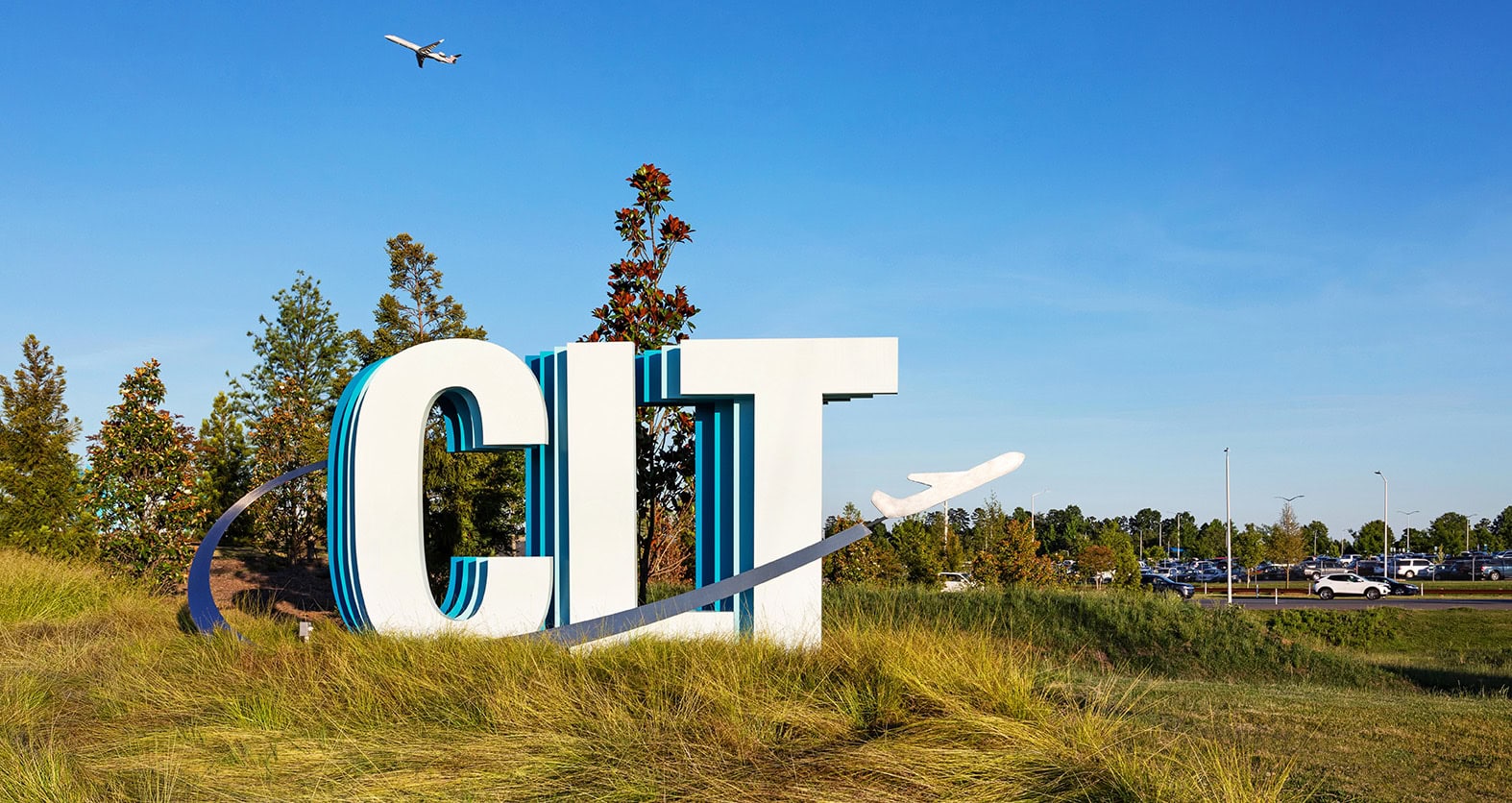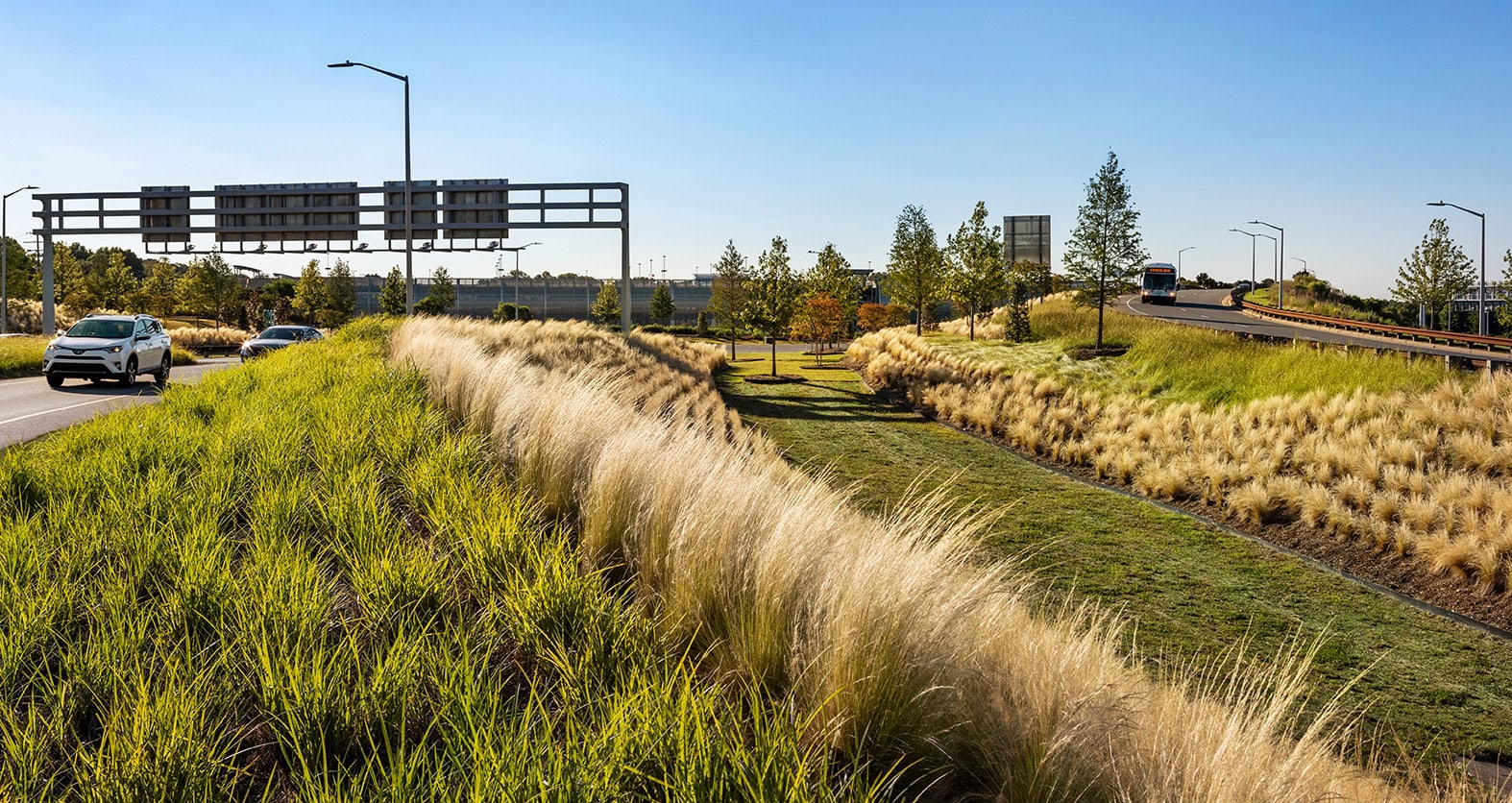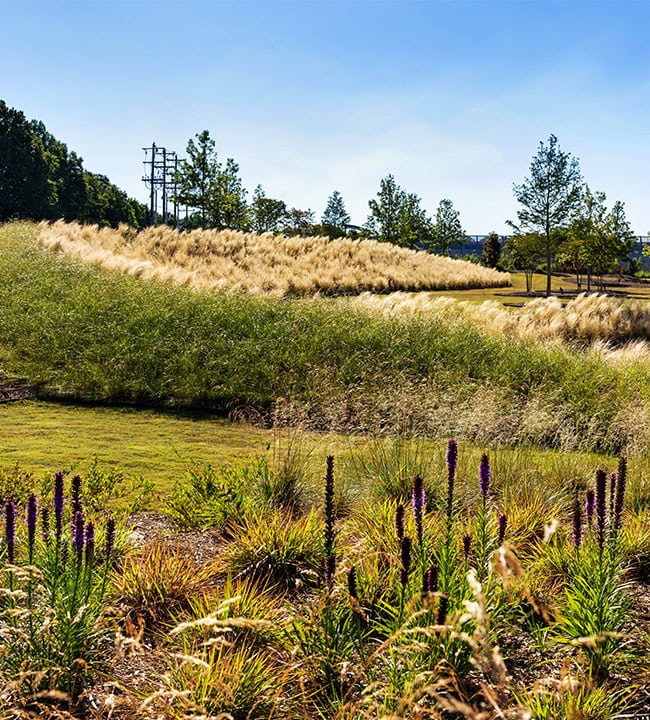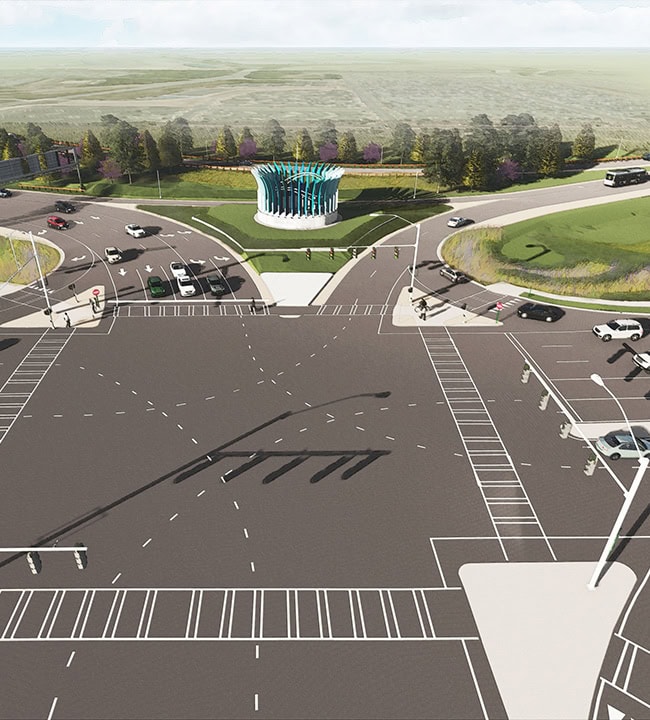Charlotte, NC
Charlotte-Douglas International Airport Gateway
A Monument to Charlotte’s Growing Influence
status
Completed 2020
client
City of Charlotte
expertise
Public Infrastructure
services
Landscape Architecture Civil Engineering


A Gateway of International Stature
The City of Charlotte’s unprecedented growth has prompted many changes, including reimagining the experience of their international airport and how it represents Charlotte to residents and visitors alike.
The gateway experience of the Charlotte-Douglas International Airport (CDIA) is now decidedly symbolic and representative of the Queen City and Piedmont region–greeting travelers at the seventh busiest airport in the world. The transformed landscape and new monumental signage contribute to the airport’s multi-billion-dollar investment to elevate the airport experience to match the prosperous growth and prominence that Charlotte is experiencing. An iconic monument reminiscent of a crown, with lighting and design details inspired by aviation, sits like a sentinel at the main vehicular entrance to the airport announcing, “You are here!” to visitors to Charlotte and travelers to the airport. On either side, as vehicles enter and exit the terminal, the city’s moniker “CLT” is sculpted in metal and nestled among the grasses and perennials of the piedmont prairie landscape. Terraforming, enhanced by meticulous plant selection and placement, guides and calms traffic that circulates the airport, offering natural serenity to balance the chaos that often accompanies an airport experience. These enhancements help the airport set the tone for a Charlotte engagement. LandDesign assembled a multi-disciplinary team of our landscape architects, civil engineers, and additional environmental designers and signage specialists to assist in crafting a refined, long-lasting statement.

From concept to construction, LandDesign collaborated with the project team to envision a landscape experience that would complement the architectural elements–an illuminated, crown-inspired monument to graphically establish Charlotte as “The Queen City,” and bold signage announcing the city’s “CLT” moniker.
North Carolina’s diverse climate granted our designers a large selection of plants to resource from. In the final design, our team used over 40,000 plants and a few specific species that aesthetically define the gateway topography with bold and distinct textures. The outer plants form a stable border while the innermost plants are more dynamic and sway with wind patterns. These ground-level graphical elements accent each other’s best characteristics and adapt to seasonal changes, while also being drought resistant. The land itself was sculpted to mimic contrails and airplane flight paths with their curled pattern. All pieces were integral in creating a graphically and functionally sound visual experience that represents Charlotte as a sensational destination.

One of the first and largest obstacles our civil designers encountered was site drainage. After analyzing the conditions of the site, our team recognized the potential for the land to become a collector of water, holding large amounts of overland water flow that otherwise would erode and impact the existing plants. To enhance drainage capacity, our civil designers studied overland water flow patterns and deployed over 18,000 cubic yards of soil and plants to redirect water flow patterns and shape the central Queen City crown pedestal. The addition of soil and erosion-resistant plants stabilize the land despite overwhelming amounts of water from storms and other disruptive weather conditions.
Maintaining efficient airport operations during construction was vital and challenging to project management. However, careful arrangement of construction work schedules and adjusting vehicular airport traffic patterns granted the project an early completion date as well as limited disruption to the airport employee and visitor experience.
Creating a Monumental Arrival Moment
The iconic crown monument is a culmination of public art, signage, wayfinding, and landscape and sits atop an elevated platform surrounded by soft flowing ornamental grasses. This monument overtook simple North Carolina Department of Transportation signage to become a beacon establishing presence and significance for the airport.




Physical
Select plants that show best at varying elevations and from all vehicular viewpoints
Functional
Alter traffic patterns during construction to contribute to schedule efficiency
Social
Create visual cues with land and plant layouts to guide drivers to their destination in highly-trafficked areas

Physical
Select plants that show best at varying elevations and from all vehicular viewpoints

Functional
Alter traffic patterns during construction to contribute to schedule efficiency

Social
Create visual cues with land and plant layouts to guide drivers to their destination in highly-trafficked areas
